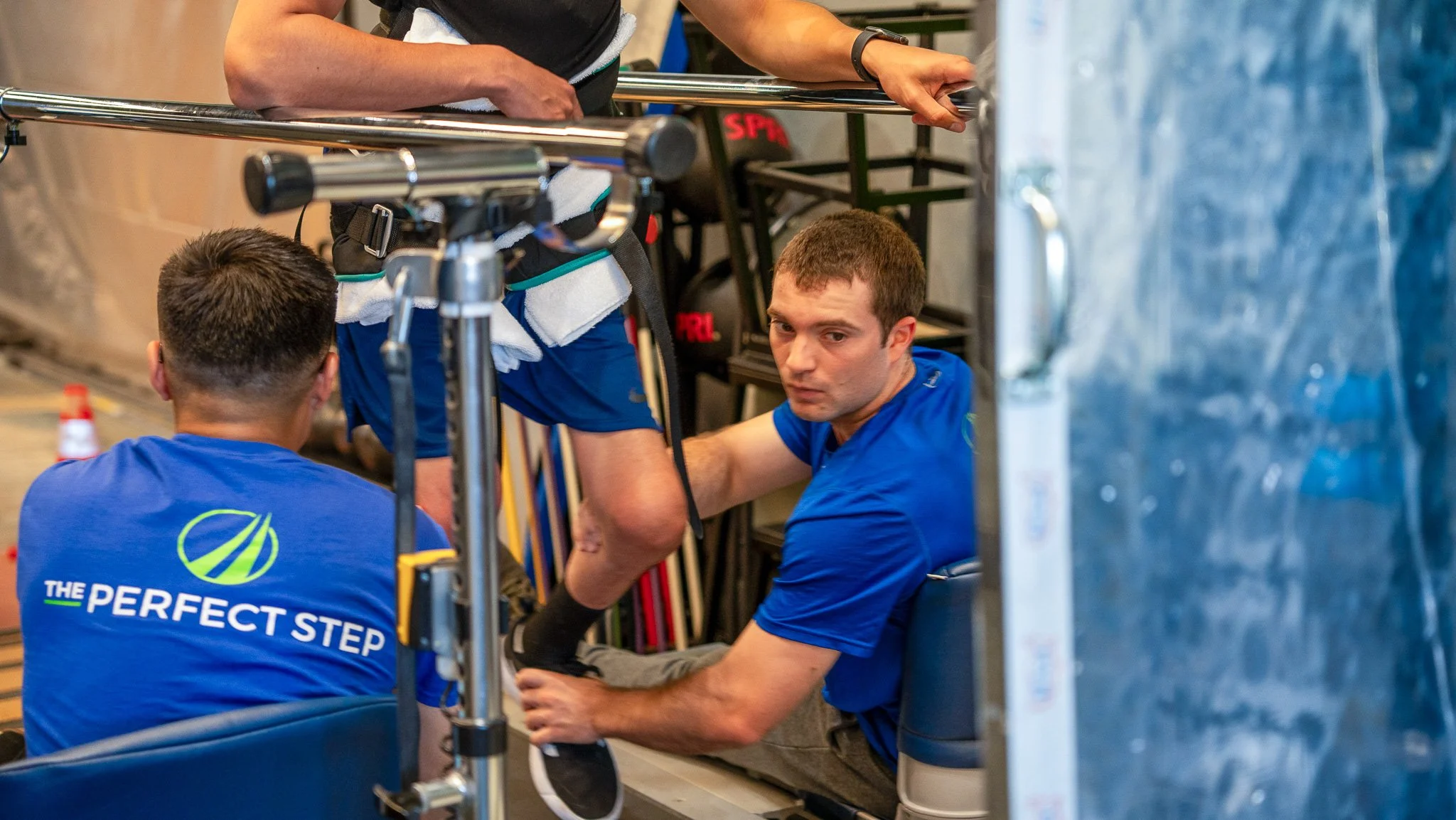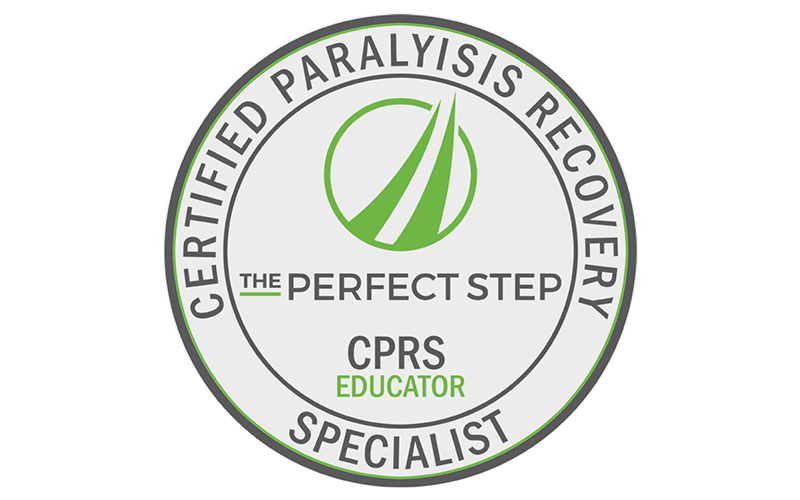
Meet The S.T.E.P. Method®
The smarter approach to paralysis recovery that helps you build strength, restore function, and take back control of your life.
Our Method & Who It Helps
After paralysis enters your life, maintaining and improving your physical and mental health isn’t easy. Traditional rehab and physical therapy is monotonous and focused on maintenance, not growth. Without ongoing, challenging movement, it’s easy to weaken, lose function, and feel stuck.
That’s why we developed the S.T.E.P. Method—Special Techniques And Exercises For Paralysis—it’s a special way of training your body and nervous system to move, grow stronger, and feel better. Our evidence-based approach helps people with paralysis reduce secondary complications, unlock their full potential, and live with greater strength, confidence, and control.
✔️ Spinal Cord Injury (SCI)
✔️ Traumatic Brain Injury (TBS)
✔️ Amyotrophic Lateral Sclerosis (ALS)
✔️ Stroke
✔️ Cerebral Palsy (CP)
✔️ Multiple Sclerosis (MS)
✔️ Parkinson’s Disease (PD)
✔️ Spina Bifida
✔️ Transverse Myelitis (TM)
Patterned Neural Activity Recruitment (PNAR)
PNAR is a technique of sending repeated signals, or patterns, to the spinal cord and brain in an attempt to stimulate and reorganize the nervous system.
While most rehab programs focus on only working with the body where it currently has function, PNAR intentionally addresses and moves parts of the body below the level of injury. By using the brain’s neuroplasticity (its ability to adapt and form new connections, our clients have been able to unlock surprising levels of function.
Exercise-Based
Exercise-based therapy at The Perfect Step focuses on enhancing your health through intense, movement-driven recovery, rather than relying solely on medication.
Since most of our clients use wheelchairs, our goal is to help you get out of the chair and counter the damage of prolonged sitting. Participation in high-intensity exercise and movement circulates blood, increases muscle mass, improves bone density, stimulates the bowel and bladder, improves coordination, and increases sensation.
Load-Bearing
Load-bearing gets you upright and putting real weight through your body to keep bones and joints strong.
When you stay seated most of the time, your brain senses less stress in those areas of the body and sends less calcium to your bones, stabilizer muscles switch off, and circulation suffers—raising your risk for weak, brittle bones (osteopenia & osteoporosis). Load-bearing regularly fires those support muscles, lines up your joints, boosts blood flow, and can even bring back lost feeling or movement.
Certified Paralysis Recovery Specialists
At TPS, you’re not working with random “trainers”. Every specialist earns our in‑house S.T.E.P. Certified Paralysis Recovery Specialist (CPRS) credential - hours of study, research, and hands-on work stacked at each level.
The training they receive is based on hundreds of thousands of hours working with clients like you, observing what works and what doesn’t. That means the person guiding you knows exactly how to push safely, spot progress you can’t see yet, and adjust on the fly when your body surprises us. When you pursue recovery at TPS, you get deeper expertise, faster wins, fewer setbacks.
Additional Components to our Methodology
While there are three main components to the S.T.E.P. Method, there are also additional components that aid in perfecting and refining our methodology.
Functional Movement Patterns
Functional Movement Patterns are based upon the movements performed during the early stages of human development. They include such things as pushing the torso off the floor, moving into a hands and knees posture, kneeling, standing, etc.
These movements help develop the nervous pathways that we begin to tap into during PNAR. They are used throughout the entire program and are the basis for a functional gait. They also continue the process of joint stabilization by using weight-bearing to load the joint and increase the stressors to the muscles, ligaments, and cartilage.
By mimicking the developmental process we hope to reorganize the nervous system to reconnect to areas below the level of injury.
Closed Chain Exercises
The primary function of the musculoskeletal system is to resist the effects of gravity on our bodies. Many people with SCI and paralysis are unable to resist gravity, therefore we must assist them with regaining this ability. One of the best ways of doing this is through closed chain exercises.
A way to articulate what a closed chain exercise does for the nervous system is how we understand and view spasms. Spasms indicate a signal from the brain getting sent down to the lower extremities but traveling off into space and not knowing where to end or where to go. By closing the chain and applying pressure to the bottom of the foot with the hands, we might be able to close the circuit of this spasm to create controlled movement. In essence, the client would be sending the signal down to the lower extremities and we would act as an end receptor to send the signal back up to the brain to create a complete current.
A closed chain exercise provides neural stimulation and biofeedback from the extremities to the brain and back again by putting the muscles in a weight-bearing position. This allows for training of postural stabilizers, co-contractors (antagonist muscles) and the neuromuscular system simultaneously. The stimulation may assist in reorganization of the nervous system.
Proper Sequencing
There should always be a why behind every exercise that is performed. With no intent behind a particular exercise, that exercise borderlines meaningless. Our Specialists follow the direction that the body is leading them and they compile a workout that ultimately focuses on:
Different components of the body.
To put the body into an anatomically correct position
To put the body in a cooperative and functional position to ultimately culminate in some form of load bearing.
The order of exercise may be planned in advance, or may be spontaneous, but it is always designed to get the most reaction from the client. By implementing creative and variable routines the nervous system is more likely to adapt and improve.
Limited movement patterns will only teach limited movement. Dynamic movement patterns will help the client develop normal movement in all planes.
Creativity and A Non-Cookie-Cutter Approach
There are certain protocols and certain workout regimens that are prescribed for the able-bodied population for injuries like ACL tears, UCL tears, etc. There are certain protocols that physical therapists follow over a 12-week program that are proven to work to heal these injuries. However, in our field, this does not always apply. In the field of neurological injuries, illnesses, and impairments, the body presents itself differently each and every day. Thus, our Specialists cannot take a cookie-cutter approach towards treating a client and providing services.
This is why each and every day we learn new things at TPS, because our specialists are continuing to explore new things, do different exercises, and think outside the box to treat our clients.
We believe that all the methods we use, the creativity, and the learning environment that we have created are able to assist people with paralysis in ways previously unheard of. Most of our clients have conditions where most medical professionals tell them, “There is no real hope for you”. We have challenged these traditional beliefs and have developed innovative treatments that have shown amazing results. We help our clients make progress and live their healthiest lives.





